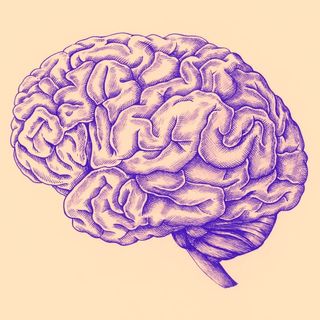
Lack of Healthy Coping Mechanisms Behind Internet Addiction in Indian Teens
A lack of digital literacy skills put teens further at risk.

Late last year, NDTV reported an increase in the number of school- and college-aged students developing “severe behavioral and psychiatric problems” related to internet use; the number of youth visiting the All India Institute of Medical Sciences (AIIMS) Behavioral Addiction Clinic with complaints of “internet addiction” has almost doubled since the launch of the facility two years ago. Experts say this reflects the coping mechanism of a generation that grew up with plenty of screens, but without the skills to navigate them healthily.
Internet addiction can be defined as an uncontrolled use of the internet for gaming, gambling, pornography, social networking or blogging. Most parents would say their child spends too much time online, but just because someone uses the internet a lot, or even obsessively, doesn’t always mean they’re addicted. The diagnosis comes when online activities start to interfere with the person’s daily, real-world life.
Related on The Swaddle:
How Much Screen Time Should a Teenager Have?
Like any other addiction, internet addiction is more likely for individuals with certain risk factors. It’s also not limited to teens and young adults, “…though some — especially those who have depression or anxiety disorder — may be particularly vulnerable,” according to Talbott Recovery, a US-based center for addiction and co-occurring disorder.
This reflects a broader debate among the medical community as to the nature of internet addiction — whether it is its own disorder, or a secondary manifestation of other problems. Dr. Ayushman Khanna, a clinical psychologist at Mumbai’s New Life Clinic, says for most Indian youth with internet addiction, it’s the latter. Struggles with conditions like ADHD, anxiety over schoolwork and relationships, and mental health conditions like depression could make the Internet seem more appealing. “At this age, they might also find the Internet more comforting as they try and escape the pressure of exams, school or having to leave school and home to go for higher studies. In order to be able to find a new identity, some teens may also take to the internet because it helps them be themselves, as opposed to having to behave [a certain way] in front of family and peers,” he adds.
For these youth, Internet use becomes a coping mechanism — especially social media, according to a recent study of Grade 11 and 12 students from six higher secondary schools in Madhya Pradesh. It’s unclear what metrics the study used to define Internet addiction, but researchers concluded of the 502 students surveyed, 32.9 percent had mild Internet addiction, 16.3 percent were moderately addicted, and 0.4 percent had severe Internet addiction. Most of the students who registered with mild-to-severe Internet addiction spent the majority of their online time in social networking.
Social media is well-known to keep users coming back for more. The use of mobile tech and social media has been proven to prompt release of dopamine — the “feel good chemical”– in our brains, which can become addictive. Sean Parker, ex-president of Facebook, confirmed this in 2017, saying the site’s algorithms were made to exploit human vulnerability, by creating a social validation feedback loop that gives users a hit of dopamine with every notification.
Relying on these forms of internet activities as a coping mechanism, means healthy coping mechanisms aren’t in place. This means young people are not only unable to deal with the root of their problem — for instance, anxiety, lack of social interaction at home or outside, pressure from school or performance anxiety — but are also more vulnerable to the algorithms that draw and keep them in the online world.
Related on The Swaddle:
Parenting in the Age of Digital Distraction
A lack of digital literacy skills such as creating strong passwords, using privacy settings, and not knowing what — and what not — to share on social media puts youth even more at risk for addiction. Unfortunately, these are exactly the skills teens and young adults require to keep safe online — for instance, to be able to identify predators. Lacking this knowledge leaves them doubly vulnerable.
Curbing the rise in internet addiction among young people is a long and slow challenge. A recent report by the Digital Empowerment Foundation indicates that 30 percent of India’s population lags on basic literacy and 90 percent on digital literacy. Various initiatives, such as the Ahaan Foundation’s Responsible Netism project, and schools are also doing their bit to keep kids safe by sensitizing them to best practices for life online.
Ultimately, stemming these rising rates can only start by recognizing the problems that drive internet addiction in teens. Removing the stigma of stress, anxiety, depression and learning difficulties like ADHD, so affected teens have the chance to receive treatment and get help in building healthier ways of coping, could have a profound effect in preventing more cases of Internet addiction.
Anubhuti Matta is an associate editor with The Swaddle. When not at work, she's busy pursuing kathak, reading books on and by women in the Middle East or making dresses out of Indian prints.
Related


Why Alzheimer’s Is a Woman’s Disease
